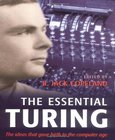Elements of Artificial Intelligence
Introduction Using LISP

Book Details:
| Publisher: | Pearson Education |
| Series: | MIX , Using |
| Author: | S. Tanimoto |
| Edition: | 1 |
| ISBN-10: | 0881751138 |
| ISBN-13: | 9780716780281 |
| Pages: | 530 |
| Published: | May 01 1987 |
| Posted: | Nov 19 2014 |
| Language: | English |
| Book format: | |
| Book size: | 27 MB |
Book Description:
Today there is a growing recognition of computer science as a laboratory science. In addition to the mathematical theory that supports techniques in subareas such as artificial intelligence, the student needs wor work with actual programs and problems to get a feel for the technology. This book grew out of the perception that hands-on experimentation coordinated with textbook explanations of principles and of actual programs can provide and ideal learning combination for students of a artificial intelligence. The purpose of this book is to provide an up-to-date and didactically coherent introduction to the principles and programming methods of artificial inteliggence. It is appropriate for and undergraduate or first-year graduate course. While it is possible for the student to get acquainted with artificial intelligence in a single quarter or semester, a sequence of two to three quarters or semesters is preferable.
Download Link:
Related Books:
Minds and Computers
An Introduction to the Philosophy of Artificial Intelligence
Could a computer have a mind? What kind of machine would this be? Exactly what do we mean by 'mind' anyway?The notion of the 'intelligent' machine, whilst continuing to feature in numerous entertaining and frightening fictions, has also been the focus of a serious and dedicated research tradition. Reflecting on these fictions, and on the research tradition that pursues 'Artificial Intelligence', raises a number of vexing philosophical issues. Minds and Computers introduces readers to these issues by offering an engaging, coherent, and highly approachable interdisciplinary introduction to the Philosophy of Artificial Intelligence.Readers are presented with introductory material from each of the disciplines which constitute Cognitive Science: Philosoph...
The Essential Turing
Seminal Writings in Computing, Logic, Philosophy, Artificial Intelligence, and Artificial Life plus The Secrets of Enigma
Alan Turing was one of the most influential thinkers of the 20th century. In 1935, aged 22, he developed the mathematical theory upon which all subsequent stored-program digital computers are modeled. At the outbreak of hostilities with Germany in September 1939, he joined the Goverment Codebreaking team at Bletchley Park, Buckinghamshire and played a crucial role in deciphering Engima, the code used by the German armed forces to protect their radio communications. Turing's work on the version of Enigma used by the German navy was vital to the battle for supremacy in the North Atlantic. He also contributed to the attack on the cyphers known as 'Fish' which were used by the German High Command for the encryption of signals during the latter part of th...
Apocalyptic AI
Visions of Heaven in Robotics, Artificial Intelligence, and Virtual Reality
Apocalyptic AI, the hope that we might one day upload our minds into machines or cyberspace and live forever, is a surprisingly wide-spread and influential idea, affecting everything from the world view of online gamers to government research funding and philosophical thought. In Apocalyptic AI, Robert Geraci offers the first serious account of this "cyber-theology" and the people who promote it. Drawing on interviews with roboticists and AI researchers and with devotees of the online game Second Life, among others, Geraci illuminates the ideas of such advocates of Apocalyptic AI as Hans Moravec and Ray Kurzweil. He reveals that the rhetoric of Apocalyptic AI is strikingly similar to that of the apocalyptic traditions of Judaism and Christi...
2007 - 2021 © eBooks-IT.org



